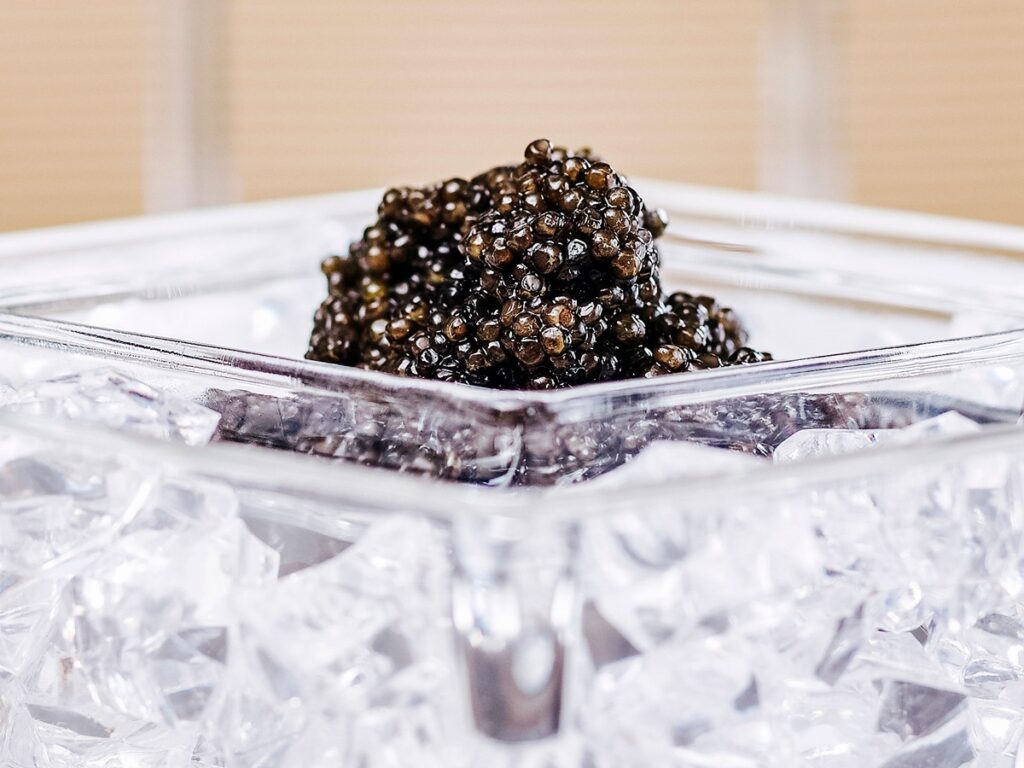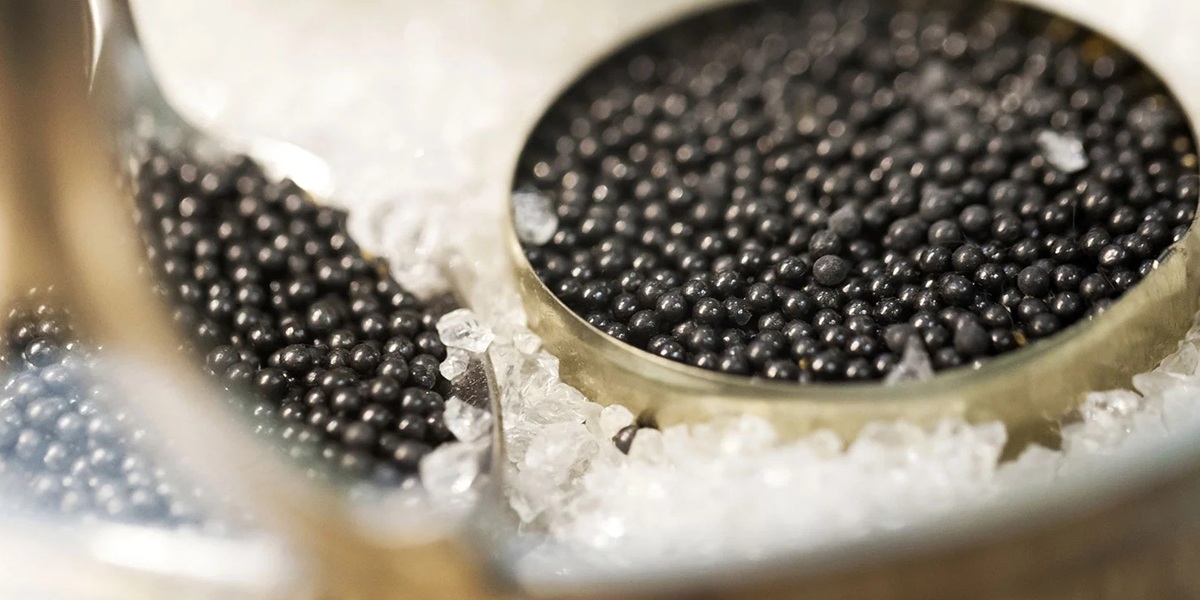Caviar is more than just a luxury food; it’s an experience that has captivated culinary enthusiasts for centuries. From its rich, buttery texture to its delicate, oceanic flavors, caviar offers a unique taste that is both refined and complex. But for beginners, navigating the world of caviar can be overwhelming. With so many types, textures, and ways to enjoy it, knowing where to start is essential.
In this guide, you’ll uncover the different types of caviar, their distinct characteristics, and how to truly appreciate this exquisite delicacy. Whether you’re looking for a mild and smooth introduction or a bold, briny experience, there’s a perfect caviar waiting for you. Stay with us as we explore everything you need to know about caviar—so you can enjoy it like a true connoisseur.
What Is Caviar? A Deep Dive into This Luxurious Delicacy
Caviar is the salted roe of sturgeon fish, often regarded as one of the most refined delicacies in the culinary world. It has been cherished for centuries, not just for its rich taste but also for its delicate texture and nutrient-rich profile. Unlike other types of fish roe, true Caviar comes exclusively from sturgeon species such as Beluga, Osetra, and Sevruga.
The quality of caviar depends on several factors, including the species, the environment in which the fish are raised, and the curing process. The best caviar is known for its smooth, buttery texture, with eggs that pop gently in the mouth, releasing a burst of briny, umami flavor.
Beyond its taste, caviar is packed with nutrients. It is a natural source of omega-3 fatty acids, essential for brain health, heart function, and reducing inflammation. It also contains high levels of vitamin B12, selenium, and antioxidants, which contribute to overall well-being.
Caviar can be enjoyed in its purest form or paired with accompaniments like blinis, crème fraîche, or toast points. The key to fully appreciating its flavor is to serve it at the right temperature—chilled but not frozen—and to use the correct utensils, such as a mother-of-pearl spoon, to avoid altering its delicate taste.
Whether you’re new to caviar or looking to refine your palate, understanding what caviar truly is will help you make informed choices and appreciate this exquisite delicacy in its finest form.
Types of Caviar: A Guide to the Finest Varieties
Caviar comes in various types, each offering a distinct flavor, texture, and color. The most sought-after varieties include:
Beluga Caviar: Known for its large, delicate eggs and smooth, buttery texture, Beluga caviar is considered the pinnacle of luxury. It has a mild, creamy taste with subtle nutty undertones, making it ideal for those who enjoy a refined, delicate flavor.
Osetra Caviar: Osetra caviar is prized for its rich, nutty taste and firm texture. The eggs vary in color from golden to deep brown, and their complexity makes them a favorite among connoisseurs.
Sevruga Caviar: With smaller, more intense eggs, Sevruga caviar delivers a briny, oceanic flavor. It has a stronger taste compared to Beluga or Osetra, making it ideal for those who prefer a more pronounced caviar experience.
Siberian Caviar: This type is gaining popularity due to its sustainable farming and affordability. It offers a smooth, slightly sweet flavor with a rich, velvety texture.
Hackleback Caviar: An American alternative, Hackleback caviar has a bold, nutty taste with small, firm eggs. It’s an excellent choice for beginners who want to explore caviar without overwhelming their palate.
Why Is Iranian Caviar the Best in the World?
Among these varieties, Iranian caviar, particularly from the Caspian Sea, stands out for its exceptional quality, especially varieties like Beluga and Osetra. The traditional, artisanal harvesting methods used in Iran, coupled with the pristine environment of the Caspian, make Iranian caviar the epitome of luxury.
Choosing the right type of caviar depends on personal taste preferences, as each variety has its own unique charm and complexity.
The Nutritional Benefits of Caviar: More Than Just a Luxury
Caviar is not only a culinary delight but also a powerhouse of essential nutrients. It is particularly rich in omega-3 fatty acids, which support heart health, reduce inflammation, and enhance brain function. These healthy fats also contribute to glowing skin and strong hair.
Vitamin B12, another key component of caviar, plays a crucial role in energy production, nerve function, and red blood cell formation. A single serving of caviar can provide more than the daily recommended intake of this vital vitamin.
Caviar is also a natural source of selenium, an antioxidant that supports immune function and protects against oxidative stress. It contains amino acids and proteins that contribute to muscle recovery and overall wellness.
Despite its luxurious reputation, caviar is a nutritious food that can be incorporated into a balanced diet. Its unique combination of healthy fats, vitamins, and minerals makes it a nourishing delicacy for both body and mind.
The Health Benefits of Caviar: More Than Just a Luxury Food
Caviar, with its high concentration of omega-3s, vitamins, and minerals, offers health benefits that extend beyond its luxurious status. It supports cardiovascular health, boosts cognitive function, and nourishes the skin, making it an excellent choice for those seeking both indulgence and wellness.

How to Enjoy Caviar: The Art of Serving and Eating It Right
The best way to experience caviar is to savor its natural flavors without overpowering them with strong ingredients. Traditionally, caviar is served chilled on a bed of ice, allowing its texture and aroma to shine.
When serving caviar, use a mother-of-pearl spoon instead of metal utensils, as metal can alter the delicate taste. If eating it directly, place a small amount on the back of your hand to warm it slightly before tasting.
Classic pairings include blinis, toast points, and crème fraîche, which complement the briny richness of the caviar without overshadowing its essence. Some prefer a minimalist approach, enjoying caviar on its own with a glass of chilled champagne or vodka to cleanse the palate.
Avoid over-seasoning or adding excessive ingredients, as the goal is to let the natural flavors of the caviar shine. The key is to eat it slowly, appreciating every subtle note and texture it offers.
How to Identify High-Quality Caviar?
To identify high-quality caviar, look for glossy, firm pearls with no broken pieces. The taste should be fresh, clean, and not overly salty, with a smooth, buttery finish. High-quality caviar, like the prestigious Iranian varieties, offers a complex and well-balanced flavor profile.
The Sustainability of Caviar: Ethical Choices for Conscious Consumers
As the demand for caviar grows, sustainability has become a crucial factor in choosing high-quality, responsibly sourced products. Overfishing has threatened wild sturgeon populations, leading to stricter regulations and a rise in sustainable caviar farming.
Today, aquaculture farms produce high-quality caviar while ensuring the preservation of wild sturgeon. These farms follow ethical practices, providing clean, controlled environments that maintain the health of the fish and the integrity of the eggs.
When purchasing caviar, look for certifications such as CITES (Convention on International Trade in Endangered Species), which ensure that the caviar is legally and ethically sourced. Opting for sustainable caviar not only supports responsible farming but also contributes to the conservation of sturgeon species for future generations.
Making informed choices allows you to enjoy caviar guilt-free, knowing that your indulgence supports ethical practices and the preservation of this exquisite delicacy.
How to Store Caviar: Keeping It Fresh and Flavorful
Proper storage is essential to maintaining caviar’s delicate texture and rich flavor. Learn the best refrigeration techniques, storage containers, and serving temperature to ensure your caviar remains fresh.
Pairing Caviar with Food and Drinks: Elevating the Experience
Discover the perfect food and beverage pairings for caviar, from traditional accompaniments like blinis and crème fraîche to sophisticated drink choices such as champagne and vodka.
Common Myths About Caviar: Separating Fact from Fiction
Many misconceptions surround caviar, from its supposed health risks to how it should be eaten. Uncover the truth behind these myths and learn how to enjoy caviar correctly.
The History and Cultural Significance of Caviar
Explore the fascinating journey of caviar, from its origins in ancient Persia to its status as a luxury delicacy in royal courts and modern fine dining.
Caviar Around the World: Regional Varieties and Traditions
Caviar isn’t just a Russian or Iranian specialty—different regions worldwide produce unique varieties. Learn how caviar traditions vary across cultures and what makes each one special.
The Essence of Caviar: A Taste of Elegance and Refinement
Caviar is more than just a gourmet indulgence; it is a reflection of history, craftsmanship, and nature’s finest offerings. Understanding its types, flavors, and best practices for consumption allows you to elevate your culinary experiences. Whether you are a beginner or a seasoned enthusiast, appreciating caviar is about more than just taste—it’s about tradition, technique, and the art of indulgence.




